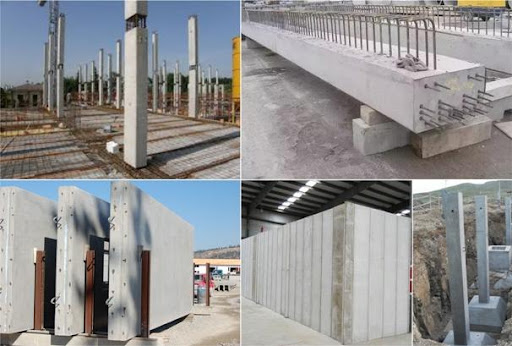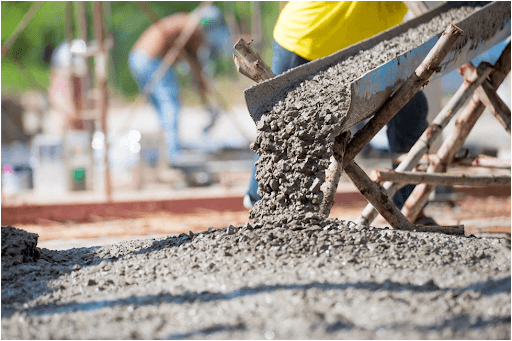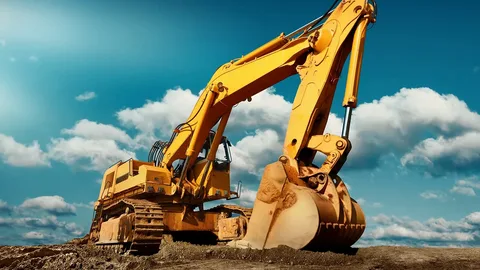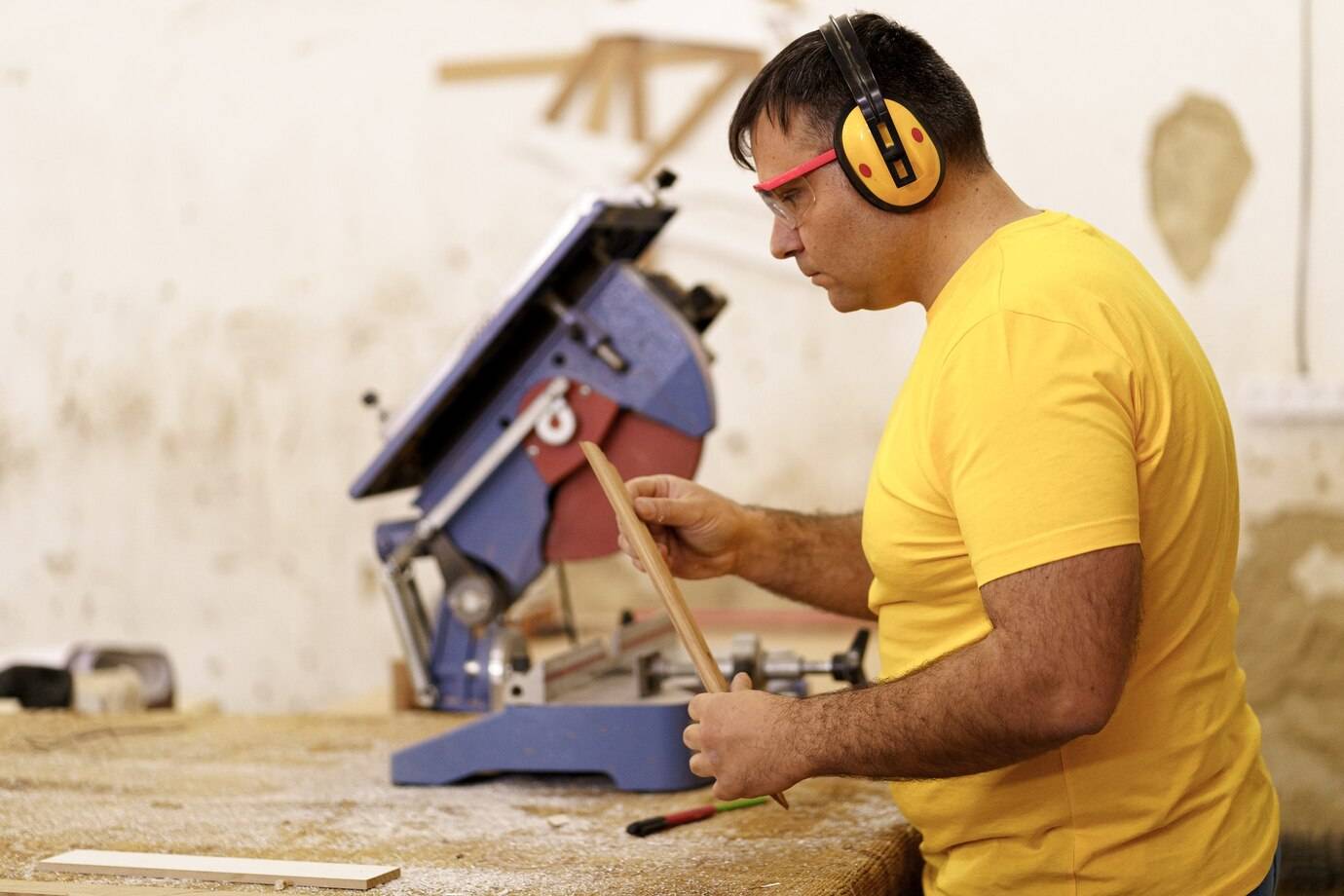
Precast concrete construction methods offer improved accuracy, labor efficiency, and cost savings compared to traditional poured-in-place concrete construction. Additionally, they can result in faster project completion times while also providing more predictability in cost and timeline due to their repeatable production process.
Precast Concrete Construction Overview
Precast concrete construction is a contemporary building technique that has revolutionized the way modern buildings are constructed. Precast concrete construction techniques have numerous benefits compared to traditional construction techniques such as increased speed, safety, and versatility; allowing for versatility in design with improved efficiency. The precast concrete process begins with the fabrication of standardized components in factory-controlled environments, which are then transported to the construction site where they will be assembled. This method of the building allows for an efficient use of resources that keeps the entire production process cost-effective and within the set budget and schedule. Its success can be attributed to its low onsite labor costs, tight site control, and more predictable production timelines. The process of precast concrete construction also reduces the risk of bad weather causing delays or quality control problems while providing stability and sustainability to the structure in the form of durability and a long life span when put into service. Its ability to resist harsh weather conditions makes it an ideal solution for various structures regardless of size, complexity, or location. Furthermore, precast concrete has been tested and proven to provide superior resistance to fire and sound insulation compared to conventional construction methods, increasing safety for occupants. By allowing for rapid and efficient installation in any environment, precast concrete construction has become one of the most preferred options for today’s builders when constructing commercial infrastructure; from large stadiums and high-rise buildings to bridges or parking garages. As precast concrete offers many advantages over traditional construction methods, it stands out as an effective option for many types of projects. Moving forward to the next section, we will take a closer look at the components required to properly execute a successful precast concrete construction project.
Components of Precast Concrete Construction Methods
The components of precast concrete construction methods can be quite varied and depend largely on the type and size of the structure being built. Precasters build a wide variety of parts, from standard shapes and sizes to precisely engineered custom components. In most cases, all components are manufactured using high-strength type III Portland cement concrete with reinforced steel foundations. Common elements include block walls, columns, joists, beams, floor panels, and stair treads. Precast concrete component manufacturing processes often involve a combination of traditional methods (such as casting and curing in specialized molds) and modern techniques including formwork automation, robotics, and 3D printing. By utilizing advanced technologies in the production of components for precast structures, contractors can reduce costs, reduce labor time, improve precision and quality, and create innovative designs. The benefits of precast construction don’t end there. The speed of assembly on-site is another great advantage; precast components can easily be connected to create a complete structure quickly and efficiently. This also ensures that each component is correctly aligned, allowing for higher levels of accuracy than traditional methods. Precast construction also provides superior safety since the limited exposure to live assemblies reduces the risk of accidents on the work site. Therefore it is no surprise that precast concrete construction is becoming increasingly popular for commercial structures due to its numerous benefits. The creation of reliable and safer construction processes with excavators under $20k on boomandbucket.com is just one reason why precasting has become an attractive solution for many applications. As we move forward, it will be interesting to see how prefabrication will continue to revolutionize our industry. With new advancements in materials and technology driving innovation, we will certainly be seeing more extraordinary projects arrive on the scene shortly. With careful planning and precise technique, we have already seen tremendous progress in the precast concrete industry. Now that we understand more about the benefits, process, and application of precast concrete construction methods let’s move on to explore what it takes to prepare the site for assembly and penalizing panels as well as decking or surfacing slabs.
From Preparing the Site to Assembling and Panelizing Panels and Decking/Surfacing Slabs
The process of precast concrete construction begins onsite with preparing the location by leveling off the ground where necessary and marking out the locations of precast concrete components. Once the location is adequately prepared it is time to move on to panelizing and assembling the panels. Depending on the type of precast concrete design, preparations for assembling and penalizing panels will vary in complexity. For example, if using precast V columns to construct a parking garage, engineers will need to factor into their calculations the necessity of reinforcing both horizontal and vertical steel rods that will be needed to link multiple V column sections together. Similarly, when penalizing slabs or decking materials, there must be proper calculations in place concerning bearing load capacities among other factors. Though in itself complex, the precast concrete construction process from site preparation to penalize components is an essential part of ensuring structural integrity across all types of structures. All decisions made at this phase must not only take structural capabilities into account but also must meet local building codes and safety regulations. This can represent a challenge for builders and engineers but pays off in the long run as a properly prepared foundation for a structure can help to minimize maintenance needs down the line. Having detailed these crucial steps leading up to the advantages of precast concrete construction, we now turn our attention to some of these advantages—from saving time and labor during assembly to providing high-quality products with long service lives—to explore why many savvy building professionals are turning toward precast concrete techniques more and more in recent years.
Advantages of Precast Concrete Construction
The advantages of precast concrete construction are many, and the benefits that it offers can be substantial when compared to more traditional construction options. Precast construction has several advantages over both onsite cast-in-place methods for producing components and premanufactured construction products such as steel or wood. The most notable benefits relate to cost, reliability, speed of completion, and safety. From a financial standpoint, precast concrete components are often significantly less expensive than other construction materials or manufactured components. This is because precast components can be designed and produced in larger quantities than traditional masonry or other materials. By obtaining precasters’ discounts, additional savings can be achieved without compromising design integrity or quality. Additionally, due to its long lifespan, the long-term value of precast concrete products will outweigh those of other materials. In some cases, depending on size and complexity, the overall cost savings of prefabricated concrete panels can amount to upwards of 30%. Speed of completion is an additional benefit of precast concrete construction. Installation times for large-scale projects such as residential buildings and stadiums can be cut significantly as compared to traditional masonry or cast-in-place installation methods. This expedited process reduces investments at job sites meaning that labor costs and related overhead expenses are minimized significantly allowing for further cost savings. Communication throughout constructing projects also becomes simplified as all processes are handled by the same contractor from manufacturing to actual installation meaning that fewer variables need to be monitored in real-time making coordination more efficient. In terms of safety and durability, precast solutions offer superior performance compared to other materials. Precast concrete construction components are made with higher quality control standards as they are manufactured in a controlled environment away from inclement weather conditions as well as other variables. These high quality control standards ensure that each component meets specified design criteria thus eliminating any potential discrepancies on the site itself during installation. Furthermore, precast solutions eliminate heavy lifting associated with masonry or cast-in-place installation processes meaning that workers are exposed to reduced risks while at work. Overall, there are many advantages associated with precast concrete solutions when compared to traditional masonry or prefabricated construction products such as steel or wood. The cost savings associated with the production of large-scale components combined with the improved speed of completion and increased safety levels makes precast solutions attractive for large-scale commercial projects such as stadiums, high-rise buildings, parks, schools, and more.







